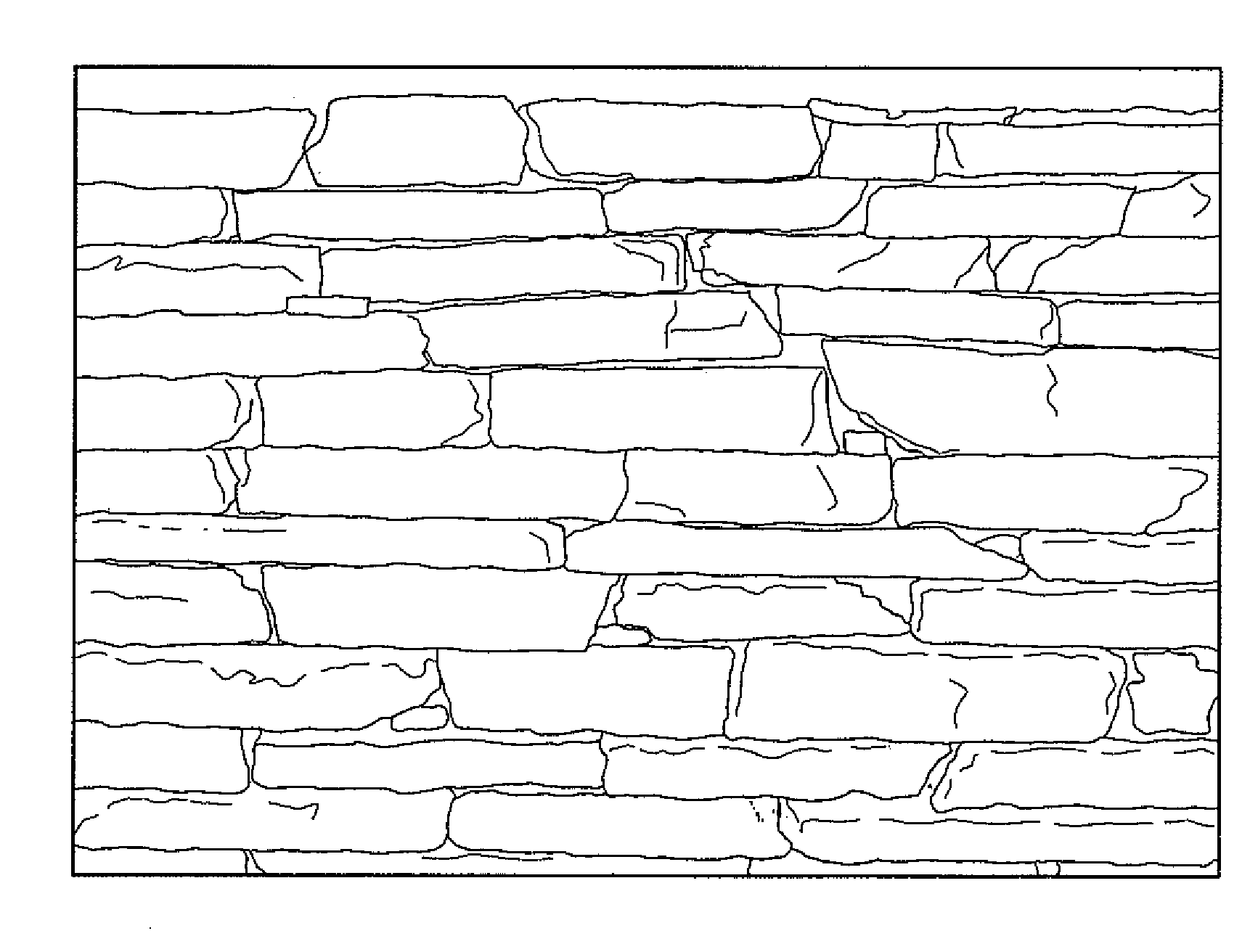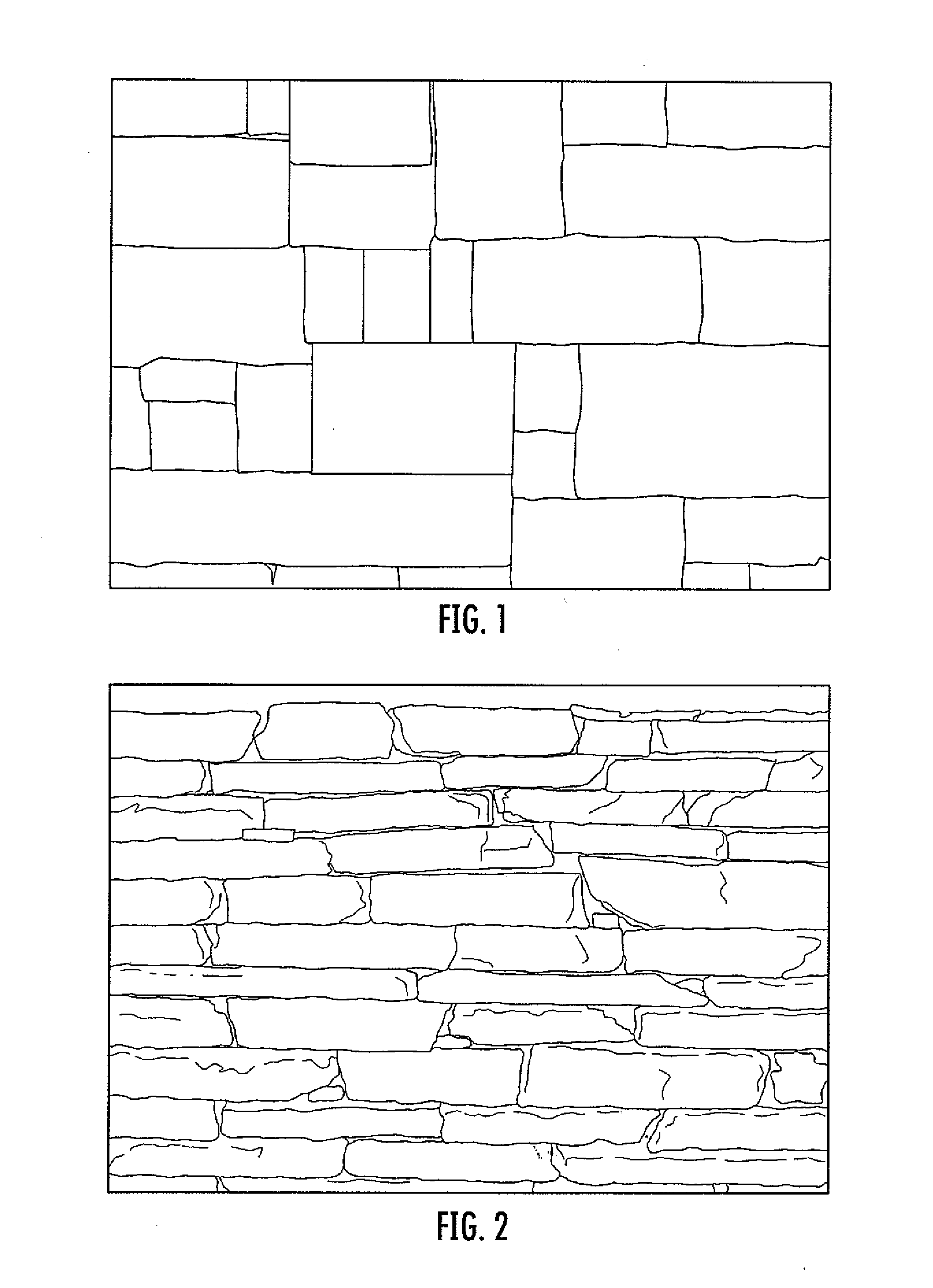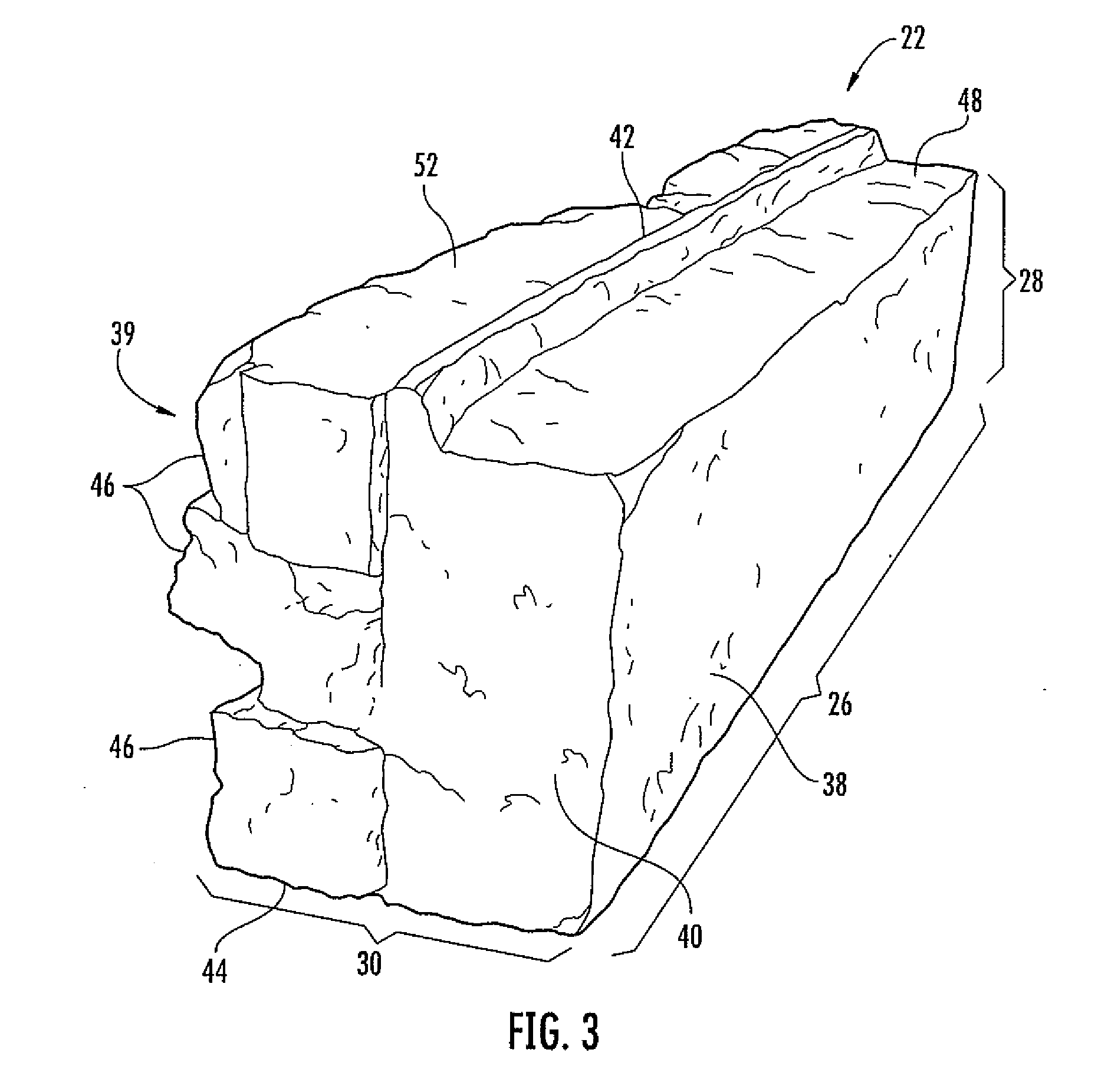[0002]Conventional bricks, also called compressed earth blocks (CEBs), in use today are typically
ceramic blocks made of
kiln-fired materials, such as clay. On a small scale, clay bricks are formed in a mold, which is called the soft mud method, and on a large,
commercial scale, clay bricks are made by extruding clay through a die and wire-
cutting the bricks, which is called the stiff mud process. Sometimes the clay is mixed with water and these dampened clay bricks are subjected to high pressures. Such bricks are highly resistant to
weathering and therefore well-suited for construction of exterior walls. The shaped clay is dried and fired to achieve the final
brick shape with the desired strength. The firing process is usually done by a continuously fired kiln, in which the bricks move slowly through the firing on a
conveyor belt or the like. This enables production of an essentially indefinite number of bricks which exhibit consistent physical characteristics.
[0007]The manufactured stone blocks of the '116 publication enjoy many of the benefits of conventional bricks, such as having a space between the manufactured stone block wall and the side of the building to act as an insulating space, while also providing the appearance of a “natural”
stone wall. Additionally, the stone blocks are dimensionally compatible with conventional bricks and manufactured stone block sections may be easily interspersed into a
brick wall. Further, masons do not need to undergo substantial amounts of training to learn the method of building structures out of the manufactured stone blocks, since they are laid in a similar manner to conventional bricks with
mortar and typical mortar joints, unlike stone tiles which required a mason to learn a new method of building a structure.
[0009]These needs are addressed by the stone fabrication
system of the present invention. A hidden
mortar joint is included in the manufactured stone blocks which is not visible on the external face of the brick including the natural stone appearance in order to provide the appearance of a dry-stack wall, while also providing a joint for application of mortar or
grout to hold the manufactured stone in place and provide strength to the wall. Additionally, multiple simulated stone portions may be molded into the externally facing side of the manufactured stone block, thereby providing the dimensional compatibility advantages described in the '116 publication while also providing the appearance of irregularly shaped stones.BRIEF DESCRIPTION OF THE DRAWINGS
[0024]Also, the blocks 22 could have any desired dimensions. In one embodiment of the invention, the blocks 22 are provided with substantially uniform overall dimensions to allow for case of construction In another embodiment of the invention, the length 26, depth 30, and the height 28 are based on compatibility factors, similar to the manufactured stone blocks described in the '116 publication. The compatibility factors allow the manufacturer of the manufactured stone blocks 22 to fabricate numerous shapes and sizes of manufactured stone blocks 22 that may be used in conjunction with one another and in conjunction with other types of building materials to build a structure. The dimensions of the manufactured stone blocks 22 are proportional so that various sizes of manufactured stone blocks 22 may be used in conjunction to build a structure. The compatibility factors are preferably determined based on the dimensions of a conventional brick, or compressed earth block (“CEB”). The dimensions of a compressed earth block in the United States typically include a length of about eight (8) inches, a height of about two and one quarter (2.25) inches, and a depth of about four (4) inches. Additionally, the typical
mortar joint is about ¼ inches thick. Thus, the manufactured stone blocks 22 according to the present invention may have a compatibility factor for the length 26 of 8 inches in a preferred embodiment. The compatibility factor for the height 28 of the front face 39 of the block may be 2.5 inches (the typical height of a CEB plus the typical width of a
mortar joint). The compatibility factor for the depth 30 may be four (4) inches but remains constant, that is, the manufactured stones 22 are preferably manufactured with dimensions at multiples of the compatibility factors for length 26 and height 28, but typically have a substantially constant depth 30, which is substantially equal to the depth 30 of a compressed earth block. One motivation and
advantage behind
sizing manufactured stone blocks 22 based on their CEB counterparts is that the manufactured stone blocks 22 and the CEBs may be easily used in conjunction if their shapes are proportional.
[0033]The manufactured stone blocks with hidden mortar joints allow a wall to be built with strength similar to full
bed masonry. However, since the mortar joint is not substantially visible on the front face 39 of the manufactured stone block 22, a structure constructed from the manufactured stone blocks of the present invention will provide the appearance of a dry-stack wall, with limited
grout visible to an observer of the external portion of the structure. Additionally, the manufactured stone blocks may be used by a mason to build a structure using building methods substantially similar to methods used in building structures with bricks with visible mortar joints using a trowel and other typical equipment, rather than forcing the mason to learn new building methods.
 Login to View More
Login to View More  Login to View More
Login to View More 


